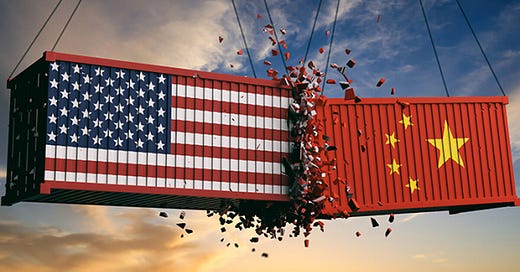Tariffs, Fentanyl, and Fragile Talks
U.S.-China Negotiations in Geneva Could Shift Global Trade Trajectory
Illustration by: iStock
Top officials from the United States and China are meeting this weekend in Geneva in what could become a pivotal moment for the global economy. After months of tariff escalations in President Trump’s trade war with Beijing, the two sides are finally back at the negotiating table.
The summit—led by U.S. Treasury Secretary Scott Bessent and Chinese Vice Premier He Lifeng—is the first in-person meeting since Trump raised tariffs on Chinese imports to 145 percent. China responded with 125 percent duties on American goods and tightened controls on exports of critical raw materials.
These meetings, taking place near the headquarters of the World Trade Organization, come as fears mount over a global economic downturn. The WTO has warned that the division of the global economy into rival blocs could shrink global GDP by nearly 7% over time, with the harshest effects falling on the world’s poorest nations.
“Both the U.S. and China have strong interests in de-escalating,” said Eswar Prasad, former China director at the IMF. “It’s significant progress that they are even talking.”
After about seven hours of discussions on Saturday, the United States announced it would not issue an official statement regarding the talks.
From Stalemate to Dialogue
For weeks, communication between the two countries was minimal, hampered by recriminations over tariffs, export controls, and the U.S. opioid crisis. But with China’s exports to the U.S. dropping 21% in April and U.S. businesses sounding alarms about rising prices and product shortages, the political calculus shifted.
President Trump, whose tariff policies have reshaped global trade since his return to office, appeared to soften his stance Friday, suggesting that tariffs could come down to 80%. “80% Tariff on China seems right! Up to Scott B.,” he posted on Truth Social, referencing Bessent. Though not an official offer, the comment signaled a possible opening for negotiations.
Commerce Secretary Howard Lutnick later clarified that the administration may settle around 34%—the level Trump announced on April 2. “The current level isn’t sustainable,” Lutnick said.
Keep reading with a 7-day free trial
Subscribe to The Rising Tide to keep reading this post and get 7 days of free access to the full post archives.




